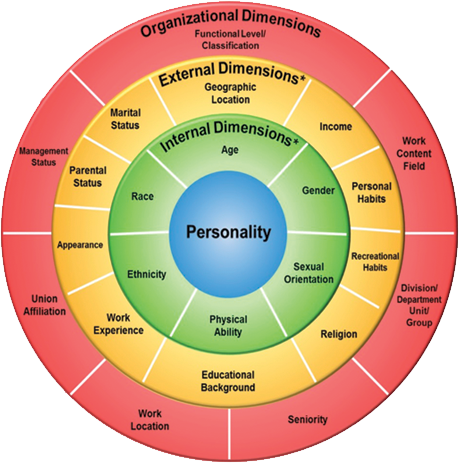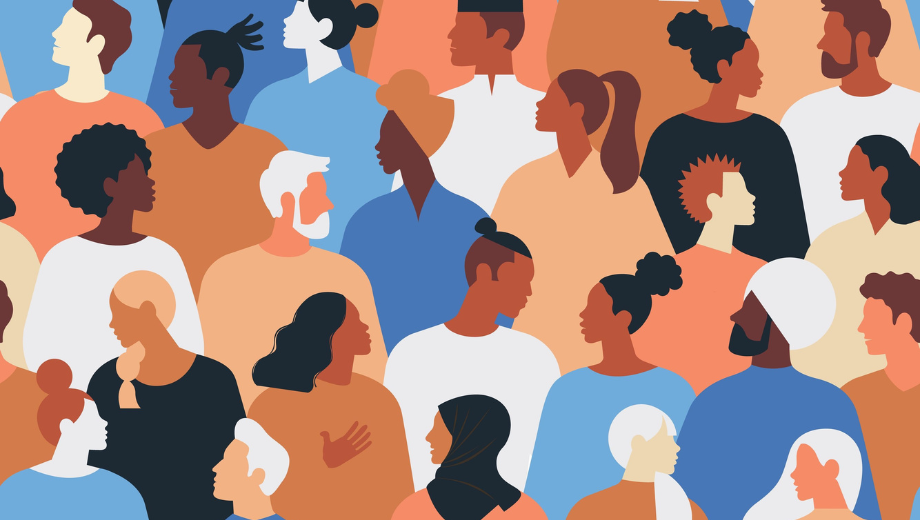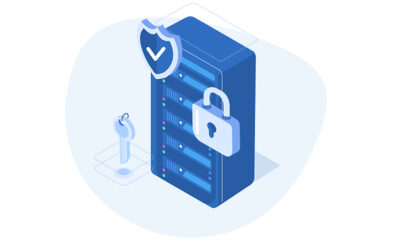The term “diversity” is on everyone’s mind. Inclusion and accessibility enable more participation, access and diversity and are a sustainable factor that all event planners should pay attention to. Similar to digitalization, inclusive events will be the standard in the future. But how does an event manager act and plan in a diverse and inclusive way? And how do you do full justice to all this diversity?
In this article, we give you the best practices for inclusive events.
What are inclusive events?
Inclusive events are events that are designed so that everyone can participate and no one is excluded. Diversity and accessibility play a central role. Inclusive events take into account the “seven dimensions of diversity” (also called diversity dimensions). At their core, these consist of 1. gender, 2. sexual orientation. 3. age, 4. ethnic origin and nationality, 5. religion & belief, 6. disability and 7. social origin.
Why is inclusion important at events?
Inclusion will play an increasingly important role in events in the future. According to Hoffmann-Wagner and Jostes, inclusion is one of the four pillars that will determine our future event concepts.
There are many reasons why various events are important and forward-looking. We have filtered out a few for you:
- Inclusion is a human right: Inclusion is a human right enshrined in the UN Disability Rights Convention, which came into force in Germany in 2009.
- Social aspect: Every person should be given the opportunity to participate fully and equally in all social processes – right from the start and regardless of individual abilities, ethnic or social origin, gender or age.
- Role model effect: If diversity is also a normal part of events, events can help to break down prejudices, broaden the horizons of participants and make a statement for a colorful society.
- Participants call for diversity: Participants are increasingly aware of deficits in the area of inclusion and equality and are articulating them publicly.
Diversity dimensions as a common theme for inclusive events
To communicate and design your event in an open, diverse and inclusive way, pay attention to the seven diversity dimensions (summarized here in six dimensions). These can serve as a common thread for your planning.

Source: https://www.gardenswartzrowe.com/why-g-r
Gender & sexual orientation
This is understood to mean gender equality. This includes not only women and men, but also non-binary and genderqueer people, cis and trans people, inter, endo and agender people, etc.. At the latest since the introduction of the gender entry “divers”, the binary system of two genders is also questioned and discussed in the German mainstream.
Example for inclusive events: be mindful of all genders when registering and specifically state in your communications that you are reaching out to all genders and people of all sexual orientations (LGBTQ+).
Age
This means addressing people of all ages. Old and young people – both should be taken seriously. Demographic change means that the target group of older people is becoming ever larger. This makes it all the more important to eliminate age discrimination and address seniors in an inclusive manner. On the other hand, young people also do not want to be confronted with stereotypical assumptions about their age.
Example for inclusive events: consider the diversity of age groups when choosing images and in communication if you want to appeal to young and old.
Ethnic origin and nationality
In times of globalization, it is no longer enough to consider only your own nationality. Therefore, you should always remember that your target group may be composed of different countries of origin, native languages and cultures.
Example for inclusive events: Consider cultural diversity when choosing images. Pay attention to multilingual texts. Address the issue of racism and avoid stereotypes.
Religion & Worldview
In an increasingly globalized world, people of very different religions will attend your events.
Example for inclusive events: Avoid clichés and stereotypes when talking about religions and world views. Consider religious eating habits when catering (is there vegetarian food and dishes without pork, etc.)?
Disability
Around 9.4% of the German population is severely disabled. Disabilities can be physical, mental or psychological. According to the General Equal Treatment Act, people with a disability should have the same opportunities as non-disabled people.
Example for inclusive events: Plan your inclusive events barrier-free and think about blind or deaf people and people with learning disabilities in your texts and presentations.
Social origin
Social origin and social status play a decisive role in determining what opportunities people have for education, work and promotion, prosperity and other resources. Often, financial resources also play a decisive role.
Example for inclusive events: offer different price categories and promotions for your event.
8 ways to make your events more incluvie
Although diversity is gaining attention, there is still room for optimization at events.
Depending on the industry, topics such as inclusion, diversity and equality are considered quite differently. For example, it can be observed that public institutions pay much more attention to this concept at events than some industries that are not yet as advanced or are very male-dominated.
Many event planners often make decisions based on gut instinct, without having a clear concept for inclusive events. To change this, we give you solid tips on how to make your upcoming event more diverse.
Tip 1: Plan an accessible event
It is important to pay attention to accessibility from the beginning, both in the external presentation and in the organization.
- Physical accessibility: The venue must be easy to find for everyone, and everyone should be able to move around the venue in a self-determined manner. Especially for people in wheelchairs, barrier-free/step-free access to all rooms must be possible (e.g., paved paths, ramps, door widths, toilets, acoustics, lighting conditions must be considered). Likewise, “flexible” furniture (e.g. standing tables, tables that can be moved underneath, height-adjustable lectern) is important and there should be enough space to ensure freedom of movement for participants with wheelchairs and walking aids.
- Linguistic-communicative accessibility: invitations, public announcements, program booklets, etc. are already important in the run-up to an event – here there are some linguistic challenges that can be overcome by using easy language or pictograms. At the events themselves, topics such as translation into sign language or written interpretation become interesting.
Tip 2: Make communication inclusive
Be sure to use an inclusive approach and language and imagery in all of your external communications.
- Multilingual texts in easily readable font and in easy language
- Inclusive language ( gender-equal language, language for the blind)
- Inclusive pictures (photos of different people from different backgrounds, young and old)
- Announcement on the Internet barrier-free
- Disseminate marketing material through different media (email, internet, mail, flyers, radio, television…)
- Registration should be possible in different ways: verbally, by phone, in person, in writing)
- Information on accessibility
- Ask for special needs/support requirements in the registration form
- Directions and parking options
- Different price categories or possibilities for financial support
- If applicable, reference to free participation of accompanying persons/assistants
Tip 3: Inclusive communication on site
Information should be perceptible through at least two senses (hearing, seeing, feeling) (2-channel rule; multi-sense principle).
- Offer audio description, subtitles and barrier-free documents
- Mark escape routes, entrances and exits, and restrooms with pictures or pictograms
- Pay attention to special features for people in wheelchairs: Ensure that displays are at reach height, that
- certain objects or materials are accessible
- Use sign language
Tip 4: Engage diverse stakeholders
In order to not only promote diversity, but also to really live it, you should also pay attention to diversity among your actors – from the moderation to the speakers to the entertainment.
Tip 5: Select suppliers consciously
In supplier contracts, you can explicitly ensure that partners for the planning and implementation of your event (associations, experts and influencers as well as caterers, photographers and designers, etc.) stand for diversity management.
Tip 6: Consider diversity in hospitality
When catering, pay attention to the flexibility of the kitchen and the variety in catering. Can you offer dishes without pork (or gelatin) and vegetarian and vegan dishes? Perhaps you also want to offer dishes that are halal or kosher?
Tip 7: Encourage participants to deal well with the issue of inclusion
Create a broad and attractive platform that offers plenty of opportunity for exchange and ensure a respectful communication culture, both online and offline. Of course, this also includes diversity in the panels and moderation, because you are also sending a message with this.
Tip 8: Not everything has to be perfect right away
Planning inclusive events can be challenging, especially if you’re doing it for the first time. Put your:n perfectionist:in aside, after all, you won’t be able to think of everything right away, as the diversity palette is vast. Nevertheless, your efforts will surely be perceived positively and you will learn from event to event.
The advantages of inclusive events for event planners
Differentiation from the competition: We will adopt diversity in our attitude, integrate diversity structurally and strategically in processes and actions – not without observing the best examples of others and setting benchmarks. Be a pioneer and make a name for yourself with an open and diverse concept.
Larger target group: By taking the diversity of society into account in your communication and planning, you simultaneously open up your target group and appeal to more people with your event concept.
Modern, contemporary image: By implementing inclusion and equality in your event concept, you project a modern and open image to the outside world and consciously break with old, conservative thought patterns.
Stronger trust & customer loyalty: Organizers who understand the signs of the times and are open to adapting their concepts to the needs of society can benefit from greater trust and stronger customer loyalty in the long term.
Conclusion
Inclusion is one of the cornerstones for future event concepts. Take the opportunity to put conventional concepts to the test and make the right decisions for the (near) future. With inclusive events, you not only ensure more acceptance and diversity from a social perspective, but you can have a clear competitive advantage over the competition. Not only do you expand your target audience, but you also ensure an open and modern image. This in turn can lead to more trust and customer loyalty.
Are you still looking for experts to support you in planning and implementing events? Converve is your partner for your customized event platform. Contact us and tell our team your needs for your event and we will find a suitable solution for you.



